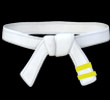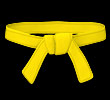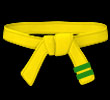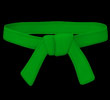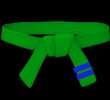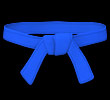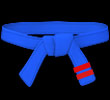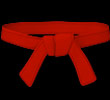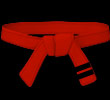Taekwondo 태권도Taekwondo Preschool
Promotion from one geup to the next can proceed rapidly in some schools, since schools often allow geup promotions every two, three, or four months. Students of geup rank learn the most basic techniques first, and then move on to more advanced techniques as they approach first dan. Many of the older and more traditional schools often take longer to allow students to test for higher ranks than newer, more contemporary schools, as they may not have the required testing intervals. View Taekwondo belt levels »
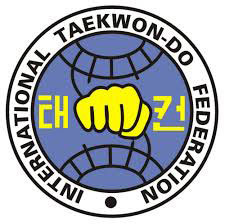
Hwa-Rang 화랑 / 花郎
( 2nd geup )
Pattern is the foundation for the teaching of taekwondo. A pattern is a detailed pattern of defense-and-attack motions and techniques used in traditional martial arts. Pattern is useful in developing proper kinetics, mental and physical fortitude.
Hwa-Rang is named after the Hwarang youth group that originated under the Silla Dynasty roughly 1350 years ago. The group eventually became the driving force for the unification of the three Kingdoms of Korea. The 29 movements refer to the 29th infantry Division, where Taekwondo developed into maturity.
The majority of the patterns (except Yul-Gok, Ul-Ji and Tong-Il) start with a defensive move, which emphasizes taekwon-do's defensive nature. All of the patterns start and end at the same location. This ensures that the practitioners' stances are the correct length, width, and in the proper direction.
Patterns (teul) are performed in accordance with "The Encyclopedia of Taekwon-Do" in 15 volumes written by General Choi Hong Hi, the latest edition being from 1999 (later editions have been published, but the 1999 editions were the last General Choi Hong Hi was directly involved with). This comprehensive work contains 15 volumes with volumes 8 through 15 dedicated to the 24 patterns and containing descriptions of the pattern movements as well as pictures showing possible applications of some of the movements. View more information about International Taekwondo Federation (ITF) Tuls Forms »
Training Methods
How well one improves with training depends on several factors, such as the frequency it is engaged in, and the type of feedback that is available for improvement. If a student does not train often enough, reinforcement fades, and he or she is likely to forget what was learned.
When learning the pattern, it is helpful to use mirrors to observe your techniques and fix your mistakes immediately. Initially, a student may need focused feedback from a certified Master Instructor ( 사범님 sabeomnim ); however, as they progress, they must develop the ability to self-assess the pattern.
Difficulty of Pattern
Taekwondo students of geup ranking learn the most basic techniques first, and then move on to more advanced and difficult techniques as they approach 1st Dan Black Belt. The more difficult the techniques, the more practice may be needed for the purpose of improving or mastering it, as in the phrase 'practice makes perfect'. Every pattern must display the requisite speed, balance, power and firmness to be realistically used as an attack or defense move.
* Please see a certified Master Instructor ( 사범님 sabeomnim ) for training. Proper guidance and instructions are needed to ensure safe training.
Patterns, tul or teul (틀) in Korean, originally called hyeong (형), form an important aspect of training in Taekwon-Do. They are equivalent to the kata in karate. The majority of the patterns (except Yul-Gok, Ul-Ji and Tong-Il) start with a defensive move, which emphasizes taekwon-do's defensive nature. All of the patterns start and end at the same location. This ensures that the practitioners' stances are the correct length, width, and in the proper direction.

General qualities that judges look for in any taekwondo practitioner include proper breathing technique and body control. The diaphragm must be engaged in deep breathing, shallow breathing concentrated in the upper abdomen results in raised shoulders and stressed muscles. The muscles of the body should be lightly relaxed in order to perform the pattern with fluidity, speed and grace. Muscles should only be tensed at the moment of imaginary impact in order to commute maximum power to any individual taekwondo technique. For more information View Key Points »
RESOURCES
This article uses material from the Wikipedia articles "International Taekwon-Do Federation", "Taekwondo", and "Hyeong", which is released under the Creative Commons Attribution-Share-Alike License 3.0.



